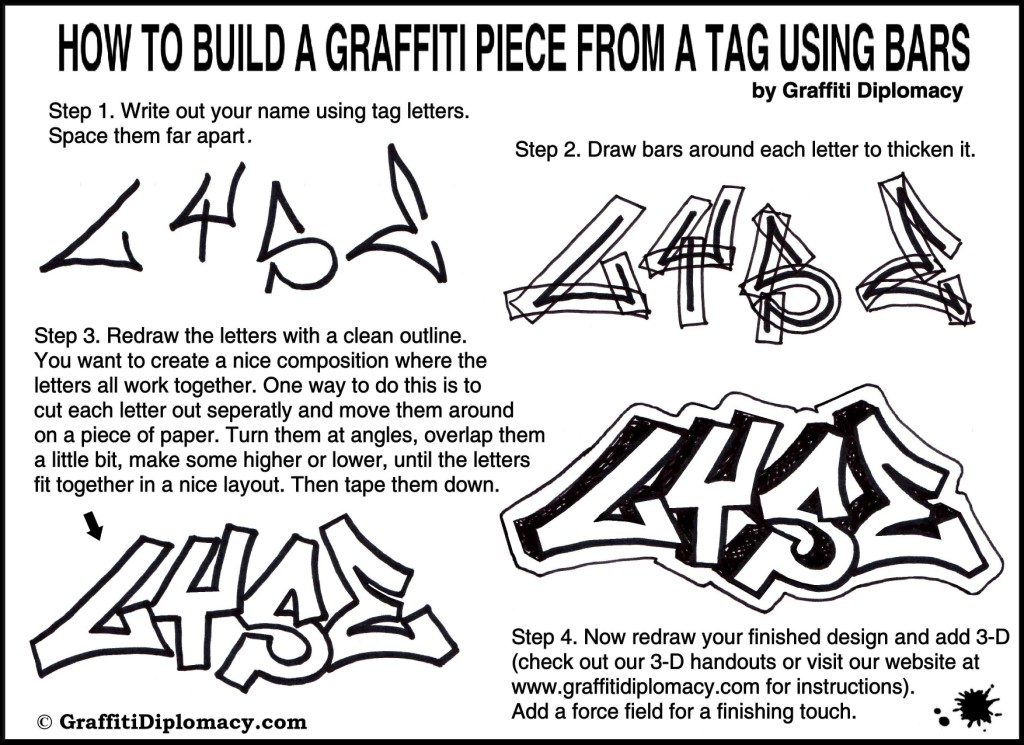7 Expert Ways To Create Graffiti Now

Introduction to Graffiti Art

Graffiti is a unique form of artistic expression that has been a part of human culture for thousands of years, from ancient civilizations to modern-day street art. The term “graffiti” originates from the Greek word “graphein,” meaning “to write.” It has evolved over time, incorporating various styles, techniques, and mediums. Today, graffiti is not only a form of self-expression but also a way to communicate social messages, beautify public spaces, and create a sense of community among artists. In this article, we will explore 7 expert ways to create graffiti, covering the basics, advanced techniques, and essential tips for beginners and seasoned artists alike.
Understanding the Basics of Graffiti

Before diving into the expert techniques, it’s crucial to understand the fundamentals of graffiti art. This includes knowing the different types of graffiti, such as tags, throw-ups, pieces, and murals, each with its own style and level of complexity. Familiarizing yourself with the materials and tools used in graffiti, like spray paint, markers, and stencils, is also essential. Moreover, understanding the legal aspects and ethical considerations of creating graffiti in public spaces is vital to avoid legal issues and respect the community.
7 Expert Ways to Create Graffiti

Here are seven expert ways to create compelling and professional-looking graffiti: - Mastering the Tag: The tag is the simplest form of graffiti and serves as a signature for the artist. To master the tag, practice writing your name or chosen tag in different styles, focusing on lettering, flow, and consistency. - Creating Throw-Ups: Throw-ups are quickly executed graffiti pieces that are simpler than a full piece but more complex than a tag. They require practice to achieve a balanced and visually appealing design. - Designing Pieces: A piece is a more intricate and detailed form of graffiti that can include characters, backgrounds, and 3D effects. Designing a piece involves planning, sketching, and executing the artwork with precision and patience. - Using Stencils: Stencils offer a versatile way to create detailed and complex designs with ease. They can be used for portraits, landscapes, or abstract designs, and are particularly useful for beginners or for creating repetitive elements in a piece. - Incorporating Characters: Characters can add personality and storytelling to graffiti pieces. Designing and integrating characters involves understanding proportion, anatomy, and expression, as well as how to blend them seamlessly into the overall design. - Playing with Colors and Effects: The strategic use of colors, shading, and 3D effects can elevate a graffiti piece from basic to exceptional. Understanding color theory and how to create depth and dimension is key to making your artwork stand out. - Collaborating with Other Artists: Collaborating on graffiti projects can lead to innovative and dynamic pieces. It involves communication, planning, and flexibility, as well as a willingness to learn from and contribute to the collective creative process.
Tips for Beginners

For those just starting out in the world of graffiti, here are some essential tips: * Practice: Like any skill, creating graffiti requires practice. Start with simple tags and gradually move to more complex pieces. * Study Other Artists: Look at the work of other graffiti artists for inspiration and to understand different techniques and styles. * Use Protective Gear: Always wear a mask and protective clothing when using spray paint to avoid health risks. * Respect the Law and Community: Be aware of local laws regarding graffiti and always seek permission before creating art in public spaces.
Advanced Techniques

Advanced graffiti artists can explore more complex techniques such as: * Layering: Using multiple layers of paint or other mediums to create depth and dimension. * Freehand: Creating intricate designs without the aid of stencils or other guides. * Mixed Media: Incorporating other art forms like painting, drawing, or collage into graffiti pieces.
Enhancing Readability with Tables and Images

To better illustrate the concepts and techniques discussed, tables and images can be incredibly useful. For example, a table comparing different types of spray paint and their uses could look like this:
| Type of Paint | Use | Drying Time |
|---|---|---|
| Acrylic | Detail work | Fast |
| Enamel | Base coats | Slow |

Images of graffiti pieces showcasing different techniques, such as layering or the use of stencils, can also provide valuable insights and inspiration.
🖌️ Note: Always ensure you have the necessary permissions before creating graffiti in public or private spaces, and respect the environment and community by cleaning up after your work and avoiding vandalism.
In summary, creating graffiti is a multifaceted process that involves understanding the basics, mastering various techniques, and continuously practicing and innovating. By following these expert ways to create graffiti and considering the tips and techniques provided, artists can develop their skills and contribute to the vibrant world of street art.
What is the difference between a tag and a throw-up in graffiti?

+
A tag is a simple signature or symbol used by graffiti artists to mark their presence, while a throw-up is a more complex, quickly executed piece that includes letters and possibly colors, but is less detailed than a full piece.
How can I safely use spray paint for graffiti?

+
To safely use spray paint, always wear a mask to avoid inhaling fumes, use protective clothing to prevent skin contact, and work in a well-ventilated area. Follow the instructions on the paint can and use the paint in the recommended environmental conditions.
What are some legal considerations for creating graffiti?

+
Creating graffiti without permission is considered vandalism and is illegal in most jurisdictions. Always seek permission from property owners before creating graffiti, and be aware of local laws and regulations regarding street art.



